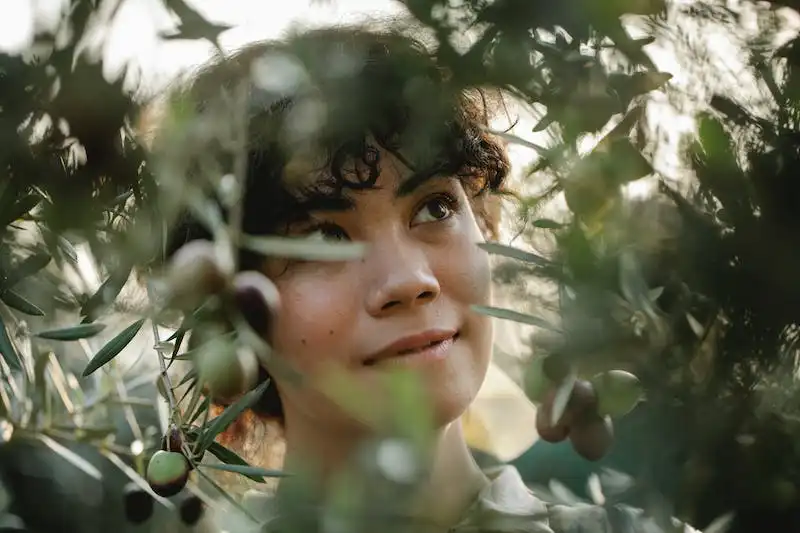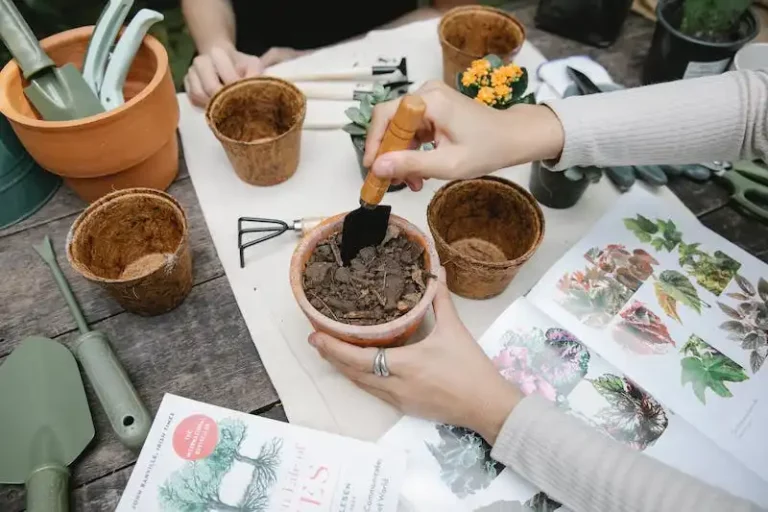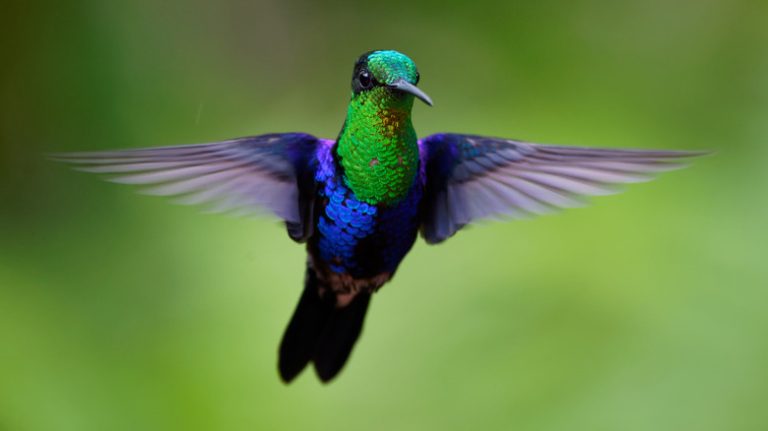If you are a fan of spring flowers like me, you will definitely love planting and caring for grape hyacinths. These lovely flowers, also known as Muscari, come in a variety of colors, making them a delightful addition to any garden. Unlike their name suggests, grape hyacinths do not produce grapes, but their small, bell-shaped blossoms do resemble clusters of grapes. Their origin can be traced back to sandy and loose soils in the southeastern parts of Europe and Asia.
Grape hyacinths are easy to grow and are typically planted in the fall or early spring. They can be grown from seeds or bulbs, but buying bulbs is the easier option. Plant the bulbs in a well-drained area of your garden, preferably in full sun or partial shade. These flowers are also windflowers, so planting them in a spot protected from strong winds will help them thrive.
One of the glorious characteristics of grape hyacinths is their ability to spread and form beautiful clusters of flowers. When planted in the right conditions, they will self-seed and create a stunning carpet of blue-black spikes in your garden. If you want to propagate them, you can divide the bulbs or collect the seeds and sow them in the fall. This will result in even more hyacinthus blooms the following spring.
Grape hyacinths are a popular choice among garden enthusiasts and horticulture experts alike. Their small size makes them a perfect fit for plantings in the front of your flower bed or as borders. They can also be planted in containers or used as accents in larger flower arrangements. Their distinct shape and colors make them a delightful sight in early spring, when many other flowers have yet to start blooming.
Muscari armeniacum
Muscari armeniacum, also known as grape hyacinth, is a small but stunning flowering plant that belongs to the genus Muscari in the family Asparagaceae. Native to the southeastern region of Europe, this plant is widely grown in gardens for its beautiful blue flowers.
The flowers of Muscari armeniacum are unique in appearance, resembling small grape clusters with tiny blue-black blooms. They grow in spikes and can be planted in the ground or in pots. Unlike actual grapes, these flowers do not bear fruit or pods.
Muscari armeniacum is a hardy plant that can tolerate cold conditions. It blooms in the late spring season, usually after the daffodils and tulips have finished flowering. The bulbs should be planted in the fall, at least 2-3 inches deep in well-draining soil. They prefer sandy or loamy soil and should be placed in a sunny location.
To propagate Muscari armeniacum, the bulbs can be divided every few years. After they have finished flowering and the foliage has died back, they can be dug up and divided into smaller bulbs. These smaller bulbs can then be replanted in the desired location.
Grape hyacinths are low-maintenance plants and require very little care. They are resistant to most pests and diseases and are not typically bothered by insects. However, they can attract bees and other beneficial pollinators to the garden.
Muscari armeniacum is a great addition to any garden, providing a splash of color and beauty. Its vibrant blue flowers can be used to complement other spring bloomers, creating a stunning display. Whether planted in mass plantings or mixed with other spring flowers, grape hyacinths are sure to be a standout.
If you are interested in buying Muscari armeniacum bulbs, they are readily available at local garden centers or can be purchased online. Growing these flowers can be a rewarding experience, as they are relatively easy to care for and will come back year after year, bringing beauty to your garden.
In addition to Muscari armeniacum, there are other species of Muscari, such as Muscari siberica and Muscari feather, which come in different colors and forms. These plants can be used to create a whole range of shades and add variety to your garden.
If you are facing any problems with growing Muscari armeniacum or any other plants in your garden, it is advisable to seek local gardening advice. Every region has its own specific conditions, and a local gardening expert can provide tailored solutions to any gardening problem you may encounter.
Overall, Muscari armeniacum is a superstar in the garden, providing a burst of color and beauty in the spring season. Its small but vibrant blue flowers, coupled with its easy-growing nature, make it a must-have for any garden.
Planting And Care Of Grape Hyacinths
Grape hyacinths, also known as muscari, are small, linear-form bulbs that produce clusters of tiny bell-shaped flowers. They are very popular in gardens due to their unique and unusual spike-like blooms. Most grape hyacinths bloom in early spring, after the main flowering season has passed. The flowers come in shades of blue, purple, and white, and their plume-like spikes add a touch of elegance to any garden or container.
When planting grape hyacinth bulbs, it’s important to choose a well-drained location. They prefer full sun or partial shade and can be planted in almost any type of soil. If the soil is heavy or clay-like, adding some compost or organic matter can improve drainage. The bulbs should be planted in the fall, a few inches deep and several inches apart. They can also be planted in containers for indoor or patio gardening.
To ensure successive blooms year after year, it’s important to let the foliage die back naturally. This allows the plant to store energy for the following season. After the flowers have bloomed and spent, you may notice small, fluffy pods forming. These are the seed heads, and if left to mature, they can self-sow and produce new plants.
One advantage of growing grape hyacinths is that they’re not typically bothered by pests or diseases. However, if you notice any issues, such as yellowing foliage or stunted growth, it may be a sign of a problem. To solve these issues, you can try dividing the bulbs and replanting them in a new location. This can help rejuvenate the plant and promote healthier growth. Additionally, adding a layer of mulch around the plants can help protect them from cold temperatures, especially in colder climates.
Grape hyacinths can be a great addition to any garden, providing beautiful blooms and a touch of color. Whether featured in a mass planting or tucked in between other plants, they are sure to stand out. Unlike their larger cousins, such as grape hyacinths and narcissus, grape hyacinths are smaller in size, making them a perfect fit for rock gardens or borders. Their jewel-like flowers and feathery foliage are simply stunning, and they deserve a place in every gardener’s collection.
Where to Plant Grape Hyacinth Bulbs
Grape hyacinths are versatile plants that can be grown in a variety of locations, both indoors and outdoors. Whether you choose to plant them in containers or in your garden, these bulbs are sure to add a touch of beauty to your space.
When it comes to planting grape hyacinth bulbs, they prefer to be in a sunny location. Plant them in a spot that receives at least six hours of direct sunlight each day. This will ensure that the bulbs have enough light to grow and produce their gorgeous blue flowers.
Grape hyacinth bulbs also thrive in well-drained soil. If your garden soil tends to be heavy and clay-like, consider adding organic matter, such as compost or peat moss, to improve the drainage. This will prevent water from pooling around the bulbs and causing them to rot.
If you’re planting grape hyacinths in containers, make sure the containers have drainage holes to allow excess water to escape. Use a well-draining potting mix specifically formulated for bulbs to provide the right growing conditions.
Another important consideration when planting grape hyacinth bulbs is their spacing. These bulbs should be planted about 4-6 inches apart, with the pointed end facing upward and the flatter end facing downward. This will give them enough room to grow and spread without crowding each other.
Grape hyacinth bulbs can be planted in the fall, just before the first frost, or in the early spring when they are dormant. If you choose to plant them in the fall, give them a head start by chilling the bulbs in the refrigerator for 6-8 weeks before planting. This will simulate the winter cold they need to break dormancy and promote healthy growth.
In addition to their stunning blue flowers, grape hyacinths also come in other shades, such as white and pink. Consider combining different varieties and colors to create a beautiful display in your garden or containers.
While grape hyacinths are known for their striking blossoms, it’s important to note that they can also self-seed and spread if not properly managed. To prevent them from taking over your garden, deadhead the flowers after they have finished blooming to prevent the formation of seeds.
Overall, grape hyacinths are relatively easy to grow and care for. They are a great addition to any garden or container, adding a burst of color and fragrance in the spring. If you have any specific questions or need further advice on growing grape hyacinths, don’t hesitate to ask your local extension office or a gardening expert.
How to Plant Grape Hyacinth Bulbs
When it comes to planting grape hyacinth bulbs, there is no problem at all. These charming flowers, also known as squills, are easy to grow and maintain.
First, you’ll want to ask yourself where you want to plant your bulbs. Grape hyacinths can bloom just about anywhere, though they do best in well-drained soil. It’s recommended to choose a spot that receives full or partial sun.
The next step is buying the bulbs. You can find them at your local gardening center or online. Make sure to choose bulbs that are firm and without any signs of rot or mold.
Once you have your bulbs, you can start preparing the planting area. Grape hyacinths are best planted in the fall, when they are dormant. Dig a hole that is three times the depth of the bulb and place the bulb in the hole with the pointed end facing up. You can plant them in clusters or linear plantings, whichever you prefer.
After planting, cover the bulbs with soil and water well. Grape hyacinths are known for their resistance to neglect, so they don’t require much care. However, it’s important to keep the soil slightly moist during the growing season.
These delightful flowers can also be grown in containers, making them perfect for smaller spaces or for adding a pop of color to your patio or balcony. Just make sure the container has good drainage and fill it with a well-draining soil mix.
If you’re growing grape hyacinths in containers, you can also try forcing them to bloom indoors. To do this, you’ll need to refrigerate the bulbs for several weeks before planting them in the container. This mimics the cold winter temperatures they need to break dormancy.
In the spring, the grape hyacinths will start to bloom. These plants produce dense clusters of small, bell-shaped flowers that resemble clusters of grapes. The flowers come in various shades of blue, purple, and white.
Grape hyacinths look beautiful when planted in mass plantings or in combination with other bulb flowers, such as daffodils or narcissus. Their loose, plume-like blossoms add a touch of elegance to any garden or flower bed.
In addition to their ornamental value, grape hyacinths also have a lovely fragrance, attracting bees and butterflies to your garden. These flowers are also deer-resistant, making them a great choice for gardeners in areas with deer populations.
In conclusion, planting and caring for grape hyacinth bulbs is very straightforward. With proper care and attention, these flowers can bring years of glorious blooms to your garden. So go ahead and choose a spot, buy some bulbs, and enjoy the beauty of these wonderful plants!




